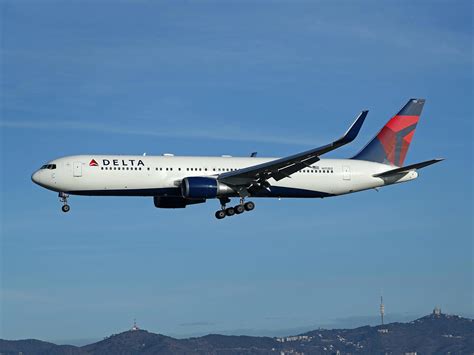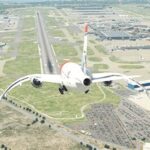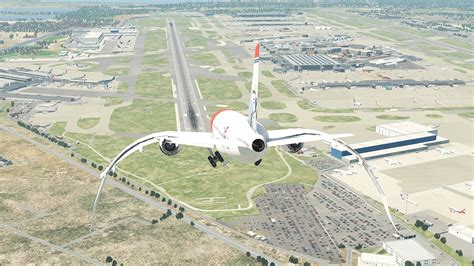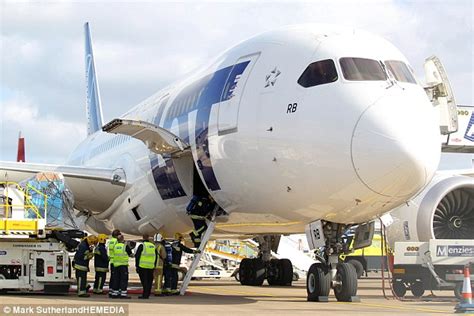
A grueling 32-hour odyssey ended in disbelief for passengers aboard a Norse Atlantic Airways flight from London Gatwick to Buenos Aires, Argentina, after they were forced to return to their starting point due to a series of unfortunate events including severe weather, a medical emergency, and operational limitations.
Passengers who boarded flight Z07301 on Sunday experienced what many described as a “flight to nowhere” after enduring over a day of travel, only to find themselves back in London Gatwick on Tuesday morning. The initial departure was already delayed, setting the stage for a cascade of issues that plagued the journey.
The first major disruption occurred when the flight encountered severe headwinds over the Atlantic Ocean. These stronger-than-anticipated winds significantly increased fuel consumption, prompting the crew to divert to Rio de Janeiro, Brazil, for a refueling stop. According to Norse Atlantic Airways, this diversion was a necessary measure to ensure the safety of all passengers and crew members.
However, the unscheduled stop in Rio de Janeiro introduced a new set of challenges. While on the ground, a passenger experienced a medical emergency, requiring immediate attention from local medical personnel. This further delayed the flight as the individual received treatment and was deemed unfit to continue the journey.
After addressing the medical situation and refueling, the flight eventually departed from Rio de Janeiro, resuming its course towards Buenos Aires. However, the cumulative delays had a significant impact on the flight’s operational parameters. As the aircraft approached Buenos Aires, the crew discovered that they would exceed the legal operating hours for the flight crew due to the prior delays.
Strict regulations govern the maximum number of hours a flight crew can work to prevent fatigue and ensure flight safety. Exceeding these limits would have been a violation of safety protocols and could have potentially endangered the flight.
Faced with this dilemma, Norse Atlantic Airways made the decision to turn the flight around and return to London Gatwick. The airline cited these limitations as the primary reason for the U-turn, emphasizing their commitment to adhering to safety regulations and prioritizing the well-being of both passengers and crew.
Passengers expressed their frustration and disappointment upon learning that they would be returning to London after such a long and arduous journey. Many took to social media to share their experiences, describing the ordeal as “horrendous” and criticizing the airline’s handling of the situation.
Norse Atlantic Airways issued a statement acknowledging the inconvenience and disruption caused to passengers. The airline offered apologies and committed to providing affected individuals with accommodations, meal vouchers, and options for rebooking their flights to Buenos Aires or receiving a full refund.
“We sincerely apologize to our customers for the disruption to their journey. This was due to a combination of factors outside of our control, including adverse weather and a medical emergency,” the airline stated. “The safety and well-being of our passengers and crew is our top priority, and we are doing everything we can to support those affected.”
The incident has sparked a debate about the challenges faced by airlines operating long-haul flights, particularly in light of unpredictable weather patterns and unforeseen medical emergencies. It has also raised questions about the adequacy of contingency plans and communication strategies in managing such complex situations.
The flight’s journey highlights the intricate logistical and regulatory factors that can impact air travel, underscoring the importance of safety protocols and the difficult decisions airlines must sometimes make in prioritizing the well-being of their passengers and crew. The incident serves as a reminder of the complexities involved in long-haul flights and the potential for unforeseen circumstances to disrupt even the most carefully planned itineraries.
As of now, passengers are being offered options for rebooking their flights or receiving a full refund, and Norse Atlantic Airways is working to address the concerns and complaints raised by those affected. The airline has also pledged to review its operational procedures to minimize the likelihood of similar incidents occurring in the future.
Detailed Breakdown of the Incident:
The Norse Atlantic Airways flight Z07301 was initially scheduled to depart from London Gatwick on Sunday, destined for Buenos Aires, Argentina. However, the departure was delayed, setting the stage for a series of unfortunate events. Initial reasons for the delay remain unclear but are believed to be related to standard operational preparations.
Once airborne, the flight encountered unexpectedly strong headwinds as it traversed the Atlantic Ocean. These headwinds had a substantial impact on the aircraft’s fuel consumption. Modern airliners carry enough fuel for the planned route, including reserves for unexpected events such as diversions. However, the intensity of the headwinds was such that the pilots and the airline’s flight dispatch team determined that the fuel reserves were being depleted at an unsustainable rate.
To mitigate the risk of running low on fuel, the decision was made to divert to Rio de Janeiro, Brazil, for an unscheduled refueling stop. Diversion decisions are meticulously calculated, considering factors such as the proximity of suitable airports, weather conditions at those airports, and the availability of ground services.
Upon landing in Rio de Janeiro, while the aircraft was being refueled, a passenger experienced a medical emergency. The nature of the medical emergency was not disclosed by the airline, but it was serious enough to require the intervention of local medical personnel. Paramedics boarded the aircraft and provided immediate medical assistance to the passenger. After an assessment, the medical team determined that the passenger was unfit to continue the journey.
The medical emergency added further delay to the already disrupted flight schedule. Arrangements had to be made to offload the passenger and ensure they received appropriate medical care in Rio de Janeiro. This process involved coordination with local hospitals and ground handling services.
After the medical situation was resolved and the aircraft was refueled, the flight resumed its journey towards Buenos Aires. However, the cumulative delays – the initial departure delay, the diversion to Rio de Janeiro, and the medical emergency – had significantly impacted the flight crew’s legally permitted operating hours.
Aviation regulations worldwide, including those adhered to by Norse Atlantic Airways, impose strict limits on the number of hours a flight crew can be on duty. These regulations are designed to prevent pilot fatigue, which can impair judgment and reaction time, thereby increasing the risk of accidents. The maximum duty hours are calculated based on factors such as the time of day the flight begins, the number of flight segments, and the time zone changes involved.
As flight Z07301 approached Buenos Aires, the flight crew realized that due to the extensive delays, they would exceed their maximum allowable duty hours upon arrival. Continuing the flight would have been a violation of aviation regulations and would have potentially compromised the safety of the flight.
Faced with this critical situation, Norse Atlantic Airways made the difficult decision to turn the flight around and return to London Gatwick. This decision was based on the paramount importance of adhering to safety regulations and ensuring the well-being of the flight crew.
The airline communicated the decision to the passengers, explaining the reasons for the U-turn. Understandably, the passengers were frustrated and disappointed, having already endured a long and arduous journey.
Upon arrival back in London Gatwick, passengers were provided with accommodations, meal vouchers, and options for rebooking their flights to Buenos Aires or receiving a full refund. Norse Atlantic Airways issued a public apology for the disruption and reiterated its commitment to the safety and well-being of its passengers.
Passenger Reactions and Social Media Outcry:
Passengers on board the ill-fated flight Z07301 expressed a range of emotions, from frustration and disappointment to anger and disbelief. The ordeal, which lasted approximately 32 hours, left many feeling exhausted and emotionally drained.
Social media platforms became a virtual forum for passengers to share their experiences and vent their frustrations. Many used hashtags such as #NorseAtlanticAirways, #FlightFromHell, and #FlightToNowhere to amplify their voices and draw attention to the incident.
Passengers described the journey as “horrendous,” “a complete disaster,” and “the worst flight experience of my life.” They criticized the airline’s handling of the situation, citing poor communication, lack of transparency, and inadequate customer service.
Some passengers recounted the moment they were informed of the U-turn, describing the collective groan that filled the cabin as the news sank in. Others expressed sympathy for the flight crew, acknowledging that they were also caught in a difficult situation.
One passenger tweeted, “32 hours later and we’re back where we started. Thanks, @NorseAtlantic for the ‘flight to nowhere.’ Absolutely unacceptable!” Another wrote, “Never flying @NorseAtlantic again. This has been a complete nightmare. Stranded, exhausted, and no clear answers.”
The social media backlash prompted Norse Atlantic Airways to issue a more detailed statement addressing the concerns raised by passengers. The airline acknowledged the shortcomings in its communication and pledged to improve its customer service protocols.
Airline Response and Investigation:
Norse Atlantic Airways responded to the incident with a public apology and a commitment to addressing the needs of affected passengers. The airline offered accommodations, meal vouchers, and options for rebooking flights or receiving refunds.
In addition to the immediate response, Norse Atlantic Airways has launched an internal investigation to determine the root causes of the incident and identify areas for improvement. The investigation will examine various aspects of the flight, including:
- Weather Forecasting: Assessing the accuracy of the weather forecasts used in flight planning and identifying potential improvements in weather monitoring and prediction.
- Fuel Planning: Reviewing the fuel planning procedures to ensure that adequate fuel reserves are allocated for long-haul flights, taking into account potential headwinds and other unforeseen factors.
- Contingency Planning: Evaluating the airline’s contingency plans for handling diversions, medical emergencies, and other disruptions.
- Crew Resource Management: Assessing the effectiveness of crew resource management (CRM) training, which focuses on communication, teamwork, and decision-making in the cockpit.
- Communication Protocols: Reviewing the airline’s communication protocols for keeping passengers informed during flight delays and disruptions.
- Customer Service: Evaluating the airline’s customer service performance in handling passenger inquiries and complaints related to the incident.
The findings of the investigation will be used to implement changes in operational procedures and training programs to minimize the risk of similar incidents occurring in the future. Norse Atlantic Airways has also stated its commitment to working with aviation authorities to ensure that its safety protocols are in line with industry best practices.
Broader Implications for the Aviation Industry:
The incident involving Norse Atlantic Airways flight Z07301 highlights several challenges faced by the aviation industry, particularly in the context of long-haul flights. These challenges include:
- Weather Variability: Increasingly unpredictable weather patterns due to climate change can significantly impact flight operations, leading to delays, diversions, and increased fuel consumption.
- Medical Emergencies: Medical emergencies on board flights are relatively common, and airlines must have procedures in place to handle such situations effectively.
- Crew Fatigue: Managing crew fatigue is a critical safety concern, and airlines must adhere to strict regulations regarding flight crew duty hours.
- Operational Disruptions: A wide range of factors, such as mechanical issues, air traffic control delays, and airport congestion, can disrupt flight schedules.
- Passenger Expectations: Passengers have high expectations for air travel, and airlines must strive to provide a safe, comfortable, and reliable service.
The aviation industry is constantly evolving to address these challenges through technological advancements, improved operational procedures, and enhanced training programs. Some of the key areas of focus include:
- Advanced Weather Forecasting: Utilizing sophisticated weather models and data analytics to improve the accuracy of weather forecasts.
- Fuel-Efficient Aircraft: Investing in new aircraft with improved fuel efficiency to reduce fuel consumption and emissions.
- Remote Medical Assistance: Providing access to remote medical consultation services on board flights to assist in managing medical emergencies.
- Fatigue Risk Management Systems: Implementing fatigue risk management systems (FRMS) to monitor and mitigate the risk of crew fatigue.
- Improved Communication Technologies: Utilizing advanced communication technologies to keep passengers informed during flight delays and disruptions.
The incident involving Norse Atlantic Airways serves as a reminder of the complexities and challenges involved in operating long-haul flights. It also underscores the importance of safety protocols, contingency planning, and effective communication in ensuring the safety and well-being of passengers and crew.
Legal and Compensation Aspects:
Passengers affected by the “flight to nowhere” may be entitled to compensation under various international and national regulations governing air passenger rights. The Montreal Convention, an international treaty, establishes airline liability for damages arising from delays, cancellations, and other disruptions to air travel.
Under the Montreal Convention, passengers may be entitled to compensation for expenses incurred as a result of the delay, such as hotel accommodations, meals, and transportation. They may also be entitled to compensation for the inconvenience and distress caused by the disruption.
In addition to the Montreal Convention, passengers may also be protected by national laws, such as the European Union’s Regulation (EC) No 261/2004, which provides for specific compensation amounts based on the distance of the flight and the length of the delay.
Passengers seeking compensation should document all expenses incurred as a result of the delay and file a claim with Norse Atlantic Airways. If the airline denies the claim or fails to provide adequate compensation, passengers may consider pursuing legal action.
It is important to note that the amount of compensation that passengers may be entitled to will depend on the specific circumstances of the case and the applicable laws and regulations. Passengers should consult with an attorney or consumer protection agency to understand their rights and options.
The incident involving Norse Atlantic Airways also raises questions about the airline’s liability for breach of contract. When a passenger purchases an airline ticket, they enter into a contract with the airline, which obligates the airline to transport the passenger to their destination.
If the airline fails to fulfill its contractual obligations due to delays, cancellations, or other disruptions, it may be liable for breach of contract. Passengers may be entitled to damages for breach of contract, including compensation for expenses incurred and the value of the lost travel opportunity.
FAQ Section:
Q1: What caused the Norse Atlantic Airways flight to return to London after 32 hours?
A1: The flight, initially bound for Buenos Aires, Argentina, returned to London Gatwick due to a combination of factors: unexpectedly strong headwinds that necessitated a refueling stop in Rio de Janeiro, Brazil; a medical emergency involving a passenger during the stopover; and the subsequent realization that the flight crew would exceed their legally mandated duty hours if they continued to Buenos Aires. According to Norse Atlantic Airways, the decision to turn around was primarily driven by safety regulations concerning flight crew fatigue.
Q2: What compensation are passengers entitled to after this “flight to nowhere”?
A2: Norse Atlantic Airways has offered affected passengers accommodations, meal vouchers, and the option to rebook their flights to Buenos Aires or receive a full refund. Additionally, passengers may be entitled to further compensation under the Montreal Convention or other applicable regulations, covering expenses incurred due to the delay and for the inconvenience caused. It is advisable for passengers to document all expenses and consult with the airline or legal counsel regarding their compensation rights.
Q3: How has Norse Atlantic Airways responded to the criticism and passenger complaints?
A3: Norse Atlantic Airways issued a public apology acknowledging the disruption and inconvenience caused to passengers. The airline has also launched an internal investigation to identify the root causes of the incident and improve operational procedures. They have pledged to review weather forecasting, fuel planning, contingency planning, crew resource management, communication protocols, and customer service processes to prevent similar incidents in the future.
Q4: What does this incident reveal about the challenges of long-haul flights?
A4: This incident underscores several challenges inherent in long-haul air travel, including the unpredictability of weather patterns, the potential for medical emergencies, the stringent regulations regarding flight crew duty hours to prevent fatigue, and the complexities of managing operational disruptions. It highlights the importance of robust contingency planning, effective communication with passengers, and adherence to safety protocols to ensure the well-being of all involved.
Q5: Are there any legal precedents for “flights to nowhere,” and what rights do passengers have in such situations?
A5: While the specific term “flight to nowhere” is not a formal legal classification, similar incidents have occurred, and passenger rights are generally protected under international agreements like the Montreal Convention and regional regulations like the EU’s Regulation 261/2004. These regulations outline airlines’ liabilities for delays, cancellations, and other disruptions, entitling passengers to compensation for expenses, inconvenience, and, in some cases, breach of contract. Passengers should familiarize themselves with these rights and seek legal advice if necessary to pursue their claims effectively.









